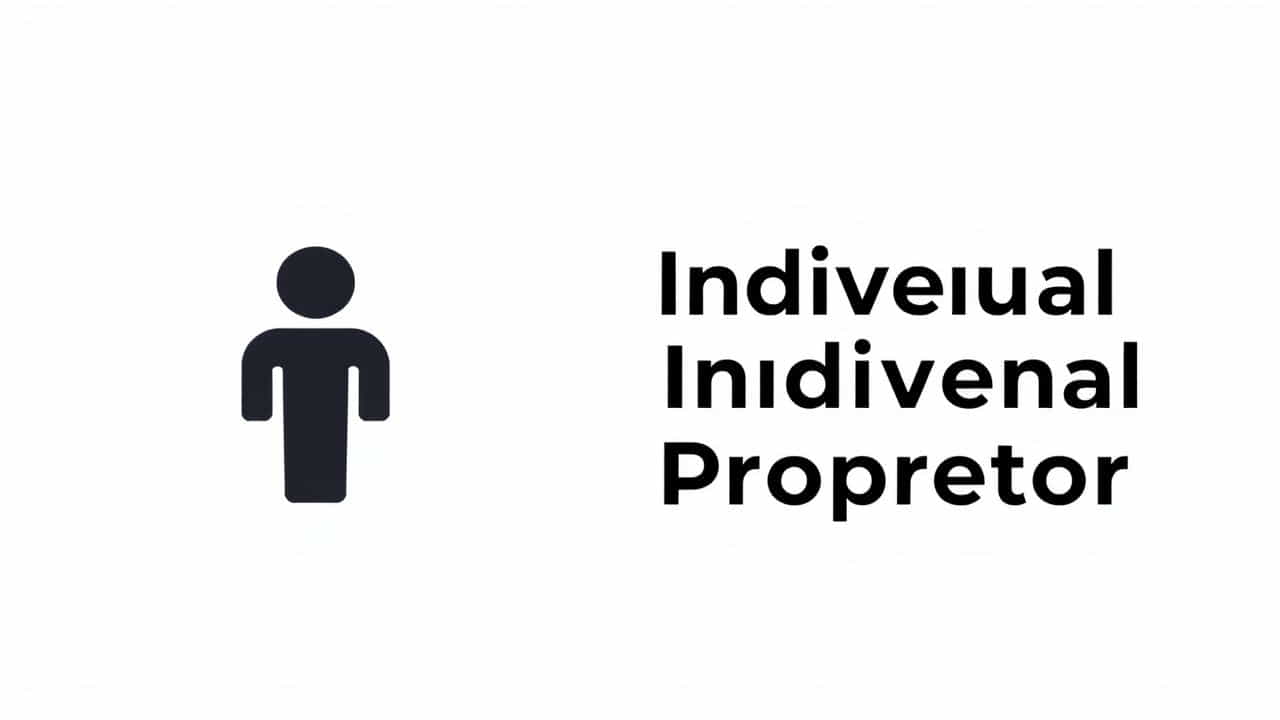An individual sole proprietor is one of the simplest and most common forms of business ownership. It refers to a business owned and operated by a single person who is responsible for all aspects of the business, including profits, debts, and liabilities.
This type of business structure is ideal for freelancers, small business owners, and entrepreneurs who want full control over their operations without the complexities of forming a corporation or partnership.
In this topic, we will explore the definition, advantages, disadvantages, legal responsibilities, and steps to start a sole proprietorship.
1. Definition of an Individual Sole Proprietor
1.1 Understanding Sole Proprietorship
A sole proprietorship is a business entity owned by a single individual who manages and operates the business independently. The owner and the business are legally the same entity, meaning that the owner is personally responsible for all financial obligations.
1.2 Characteristics of a Sole Proprietor
-
Full ownership and control over the business
-
Personal liability for debts and obligations
-
Direct taxation, with business income reported on the owner’s personal tax return
-
Ease of setup with minimal legal requirements
-
Flexibility in decision-making and business operations
2. Advantages of Being an Individual Sole Proprietor
2.1 Easy to Start and Operate
Setting up a sole proprietorship requires minimal paperwork and legal formalities compared to corporations or partnerships. In most cases, registration with local authorities and obtaining necessary licenses are sufficient to start operations.
2.2 Full Control and Decision-Making
Since there are no partners or shareholders, the owner has complete control over all business decisions, including pricing, marketing, operations, and financial management.
2.3 Lower Startup Costs
Unlike corporations that require filing fees, legal documents, and compliance costs, a sole proprietorship is cost-effective and requires little to no initial investment beyond operating expenses.
2.4 Tax Benefits
Sole proprietors report their business income on their personal tax return. This avoids the double taxation that corporations face, where both business profits and personal income are taxed separately.
2.5 Privacy and Confidentiality
Unlike corporations that are required to disclose financial statements and ownership details, sole proprietors can keep their business financial information private.
3. Disadvantages of Being an Individual Sole Proprietor
3.1 Unlimited Personal Liability
One of the biggest risks of a sole proprietorship is that the owner is personally responsible for all business debts and legal issues. If the business fails or faces lawsuits, the owner’s personal assets, such as savings and property, can be used to cover liabilities.
3.2 Limited Access to Capital
Sole proprietors may find it difficult to raise funds since banks and investors prefer businesses with limited liability structures. Most funding comes from personal savings, business revenue, or small business loans.
3.3 Workload and Responsibility
Since the owner handles all aspects of the business, including administration, marketing, sales, and finance, it can be overwhelming and time-consuming.
3.4 Limited Business Continuity
A sole proprietorship does not have a separate legal identity from the owner. If the owner retires, falls ill, or passes away, the business automatically dissolves, unless transferred or sold.
4. Legal Responsibilities of an Individual Sole Proprietor
4.1 Business Registration
Although sole proprietorships are easy to set up, some local governments require business registration or permits, especially for regulated industries.
4.2 Tax Obligations
Sole proprietors must:
-
Report income and expenses on their personal tax return
-
Pay self-employment taxes, including Social Security and Medicare
-
File sales tax returns if selling taxable goods or services
4.3 Business Name Registration
If the owner operates under a name different from their legal name, they may need to register a Doing Business As (DBA) name with local authorities.
4.4 Licenses and Permits
Depending on the business type and location, sole proprietors may need licenses, permits, or zoning approvals to operate legally.
5. How to Start a Sole Proprietorship
5.1 Choose a Business Idea
Identify a profitable business idea that aligns with your skills, interests, and market demand.
5.2 Register the Business
Check local regulations and register your business if required. If using a business name, file for a DBA.
5.3 Obtain Necessary Licenses and Permits
Research and apply for any permits or licenses required for your industry, such as health permits, professional certifications, or sales tax licenses.
5.4 Open a Business Bank Account
Separate personal and business finances by opening a dedicated business bank account. This helps with accounting, taxes, and financial tracking.
5.5 Set Up Accounting and Bookkeeping
Track income, expenses, and taxes with a simple accounting system or software to ensure financial accuracy and compliance.
5.6 Secure Business Insurance
Consider getting liability insurance, property insurance, or professional indemnity insurance to protect your business from unexpected risks.
5.7 Promote and Grow the Business
Use digital marketing, social media, networking, and word-of-mouth to attract customers and grow your brand.
6. Who Should Consider Becoming a Sole Proprietor?
A sole proprietorship is ideal for:
-
Freelancers (writers, designers, programmers, consultants)
-
Independent contractors (real estate agents, personal trainers, photographers)
-
Small business owners (retail shops, cafes, home-based businesses)
-
Self-employed professionals (doctors, lawyers, accountants)
If you want a simple business structure with low costs and full control, a sole proprietorship is a great option.
7. Alternatives to Sole Proprietorship
If unlimited liability or funding limitations are a concern, consider other business structures:
-
Limited Liability Company (LLC): Provides personal liability protection while maintaining flexibility.
-
Partnership: Suitable for businesses with two or more owners sharing profits and responsibilities.
-
Corporation: A separate legal entity with limited liability but more complex regulations.
An individual sole proprietor is the simplest form of business ownership, ideal for those who want full control, easy setup, and minimal legal requirements. However, it comes with risks such as personal liability and limited funding options.
Before starting a sole proprietorship, it is essential to understand the advantages, challenges, and legal responsibilities. By managing finances well, securing insurance, and staying compliant with tax regulations, sole proprietors can successfully build and sustain their businesses.
